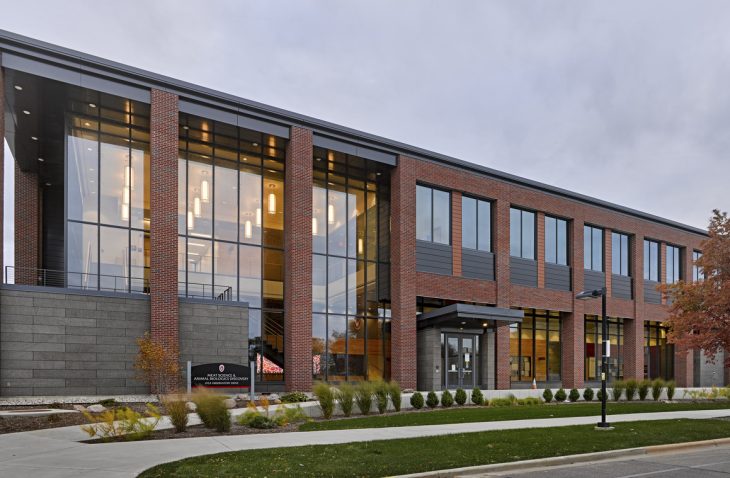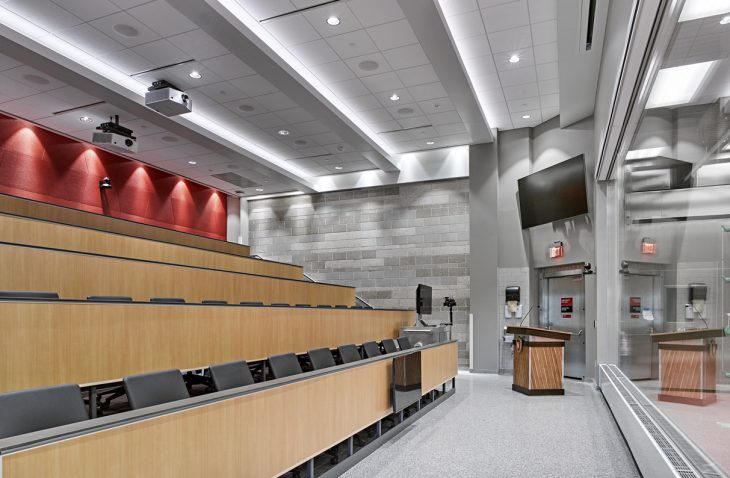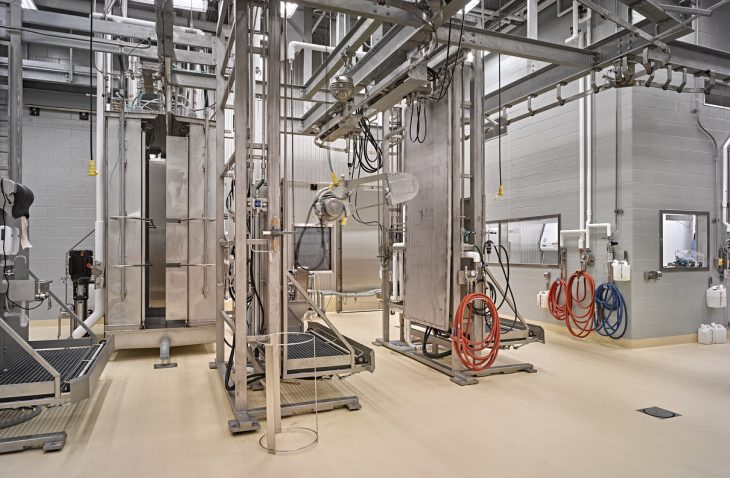New Two-story Research Building
IMEG provided mechanical and technology services for the new meat science facility at the UW Madison Campus – a two-story teaching, research, and outreach facility to support the meat industry in Wisconsin, including modern meat processing and research techniques and technologies. The building houses BSL-2 laboratories for food safety research, an abattior, carcass chilling, a butchery, a 21,400-sf meat and poultry processing facility overseen by the USDA, offices, a retail meat store, and teaching spaces including demonstration areas, classrooms, and lecture halls.
The new building enables partnerships with state, national, and international meat and poultry companies to develop new products and to test pathogen elimination methods under conditions similar to commercial establishments.
Unique design features that IMEG engineers incorporated into the facility include:
Refrigerant System Heat Reclaim
The project involved refrigerant system design for the process areas. This included three refrigerant rack systems with varying suction temperatures to optimize control and energy usage. Refrigerant racks were used to provide redundancy for the critical process systems while providing appropriate turndown for a production plant with varying loads when installed in a university setting.
Condensation Control
Close attention to humidity levels is needed both in wet environments such as the process areas that are subject to high volumes of water during wash-downs but also areas that require special humidity control. Sub-cooling of the conditioned air helps address these concerns.
BSL2 Lab Design
The fully self-contained 6,530-gsf lab enables pathogen introduction and intervention strategies in a setting that replicates commercial meat-processing methods, but with food microbiology lab capabilities. It is separated from the rest of the building in the interest of biosafety, and building systems are segregated from those in the USDA processing facility. Close collaboration with the team on the design and function of the lab was a must, and the design team first worked with the lab personnel to establish the basis of design. Proper configuration and operation for the given lab function equates to a safe environment for occupants and research. Proper air change levels, filtration, diffuser location, and room pressure relation are just a few design considerations that help maintain a safe lab environment.










